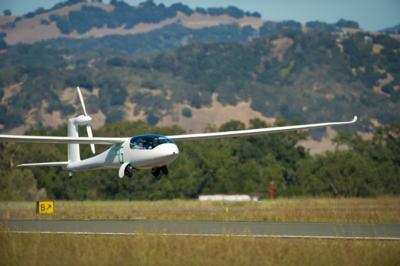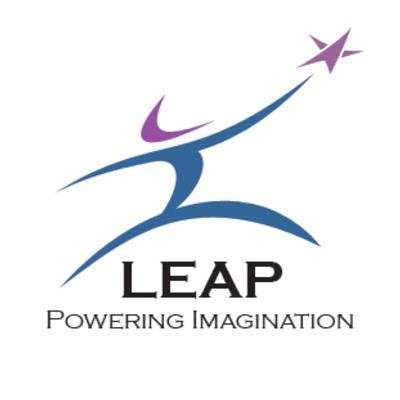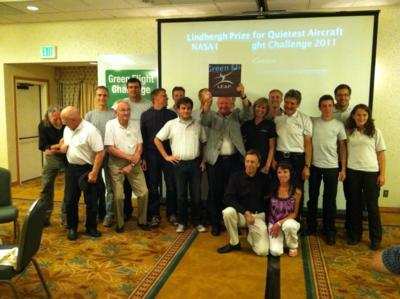Quietest Aircraft Prize Addresses One Of The Biggest Threats To
Aviation
At the NASA Green Flight Challenge, Erik Lindbergh, founder of
LEAP, announced the first winner of the Lindbergh Prize for
Quietest Aircraft.

The prize was awarded to e-Genius, a two-seat electric airplane
designed and built by University of Stuttgart Institute of Aircraft
Design under the leadership of Professor Rudolf Voit-Nitschmann and
his two assistants Len Schumann and Steffen Geinitz, and piloted by
Eric Raymond and Klaus Ohlmann. Accompanying the prize was a cash
award of $10,000, generously donated by Jean Schulz, widow of
Charles M. Schulz for whom the airport where the competition took
place was named.
The Lindbergh Prize for Quietest Aircraft is a new prize for
LEAP, which has awarded seven prior prizes for electric aircraft
development at events in Europe and the US.
LEAP’s programs recognize, inspire and incentivize the
innovation that drives our culture, economy and future. The LEAP
Electric Flight Program is accelerating the development of the
electric aircraft industry through a range of activities, from
prizes to advocacy.
The guiding principle underlying the design of the Lindbergh
Prize for Quietest Aircraft was to quantify the noise impact of
aircraft on the surrounding community. The testing was performed by
an independent team of aero-acousticians who measured takeoff noise
levels of each of the planes in the Green Flight Challenge.
Measurements were taken at several points along each side of the
runway to factor out variables such as crosswind noise. Noise
levels of the competitors ranged from a minimum of 56dBA to a
maximum of 72dBA. e-Genius won with a takeoff range of 56 –
62 dBA. By comparison, the takeoff noise of a turbo-fan aircraft at
a similar distance is 110 dBA, over 16 times louder.

“Noise is one of the most significant social and
environmental impacts of aviation” said Erik Lindbergh.
“When aircraft noise is used as a reason to close airports we
all lose. This inaugural Lindbergh Prize for Quietest Aircraft
recognizes significant achievements in the development of quieter
aircraft and compliments our efforts to advance the electric
aircraft industry. With quieter aircraft using renewable energy we
can revolutionize how we travel about the planet”.
Past winners of the Lindbergh Prize for Electric Aircraft
include:
- PC-Aero: 2011 AirVenture, Vision Award
- Pipistrel: 2011 Aero-Friedrichshafen, Best Electric
Aircraft
- LZ Design: 2011 Aero-Friedrichshafen, Best Electric Propulsion
System
- Solar Impulse: 2011 Aero-Friedrichshafen, Outstanding
Achievement Award
- Yuneec International: 2010 AirVenture, Best Electric
Aircraft
- Sonex: 2010 AirVenture, Best Electric Aircraft Subsystem
- Lange Aviation: 2010 AirVenture, Individual Achievement Award

LEAP’s mission is to stimulate innovation for a resilient
future. LEAP accomplishes its mission through two programs: the
LEAP Electric Flight Program and the LEAP Education Program.
Inspired by the legacy and determination of Erik’s
grandfather Charles Lindbergh, the X PRIZE Foundation and pioneers
throughout history, LEAP was founded to accelerate a new era in
aviation and stimulate the ingenuity of modern innovators. LEAP
does this through video showcasing, international events, prize
philanthropy and its education nonprofit.
 NTSB Final Report: Patriot Aircraft LLC CX1900A
NTSB Final Report: Patriot Aircraft LLC CX1900A Aero-News: Quote of the Day (12.06.25)
Aero-News: Quote of the Day (12.06.25) ANN's Daily Aero-Term (12.06.25): High Speed Taxiway
ANN's Daily Aero-Term (12.06.25): High Speed Taxiway ANN's Daily Aero-Linx (12.06.25)
ANN's Daily Aero-Linx (12.06.25) Airborne-NextGen 12.02.25: Honda eVTOL, Arctus High-Alt UAS, Samson Patent
Airborne-NextGen 12.02.25: Honda eVTOL, Arctus High-Alt UAS, Samson Patent





